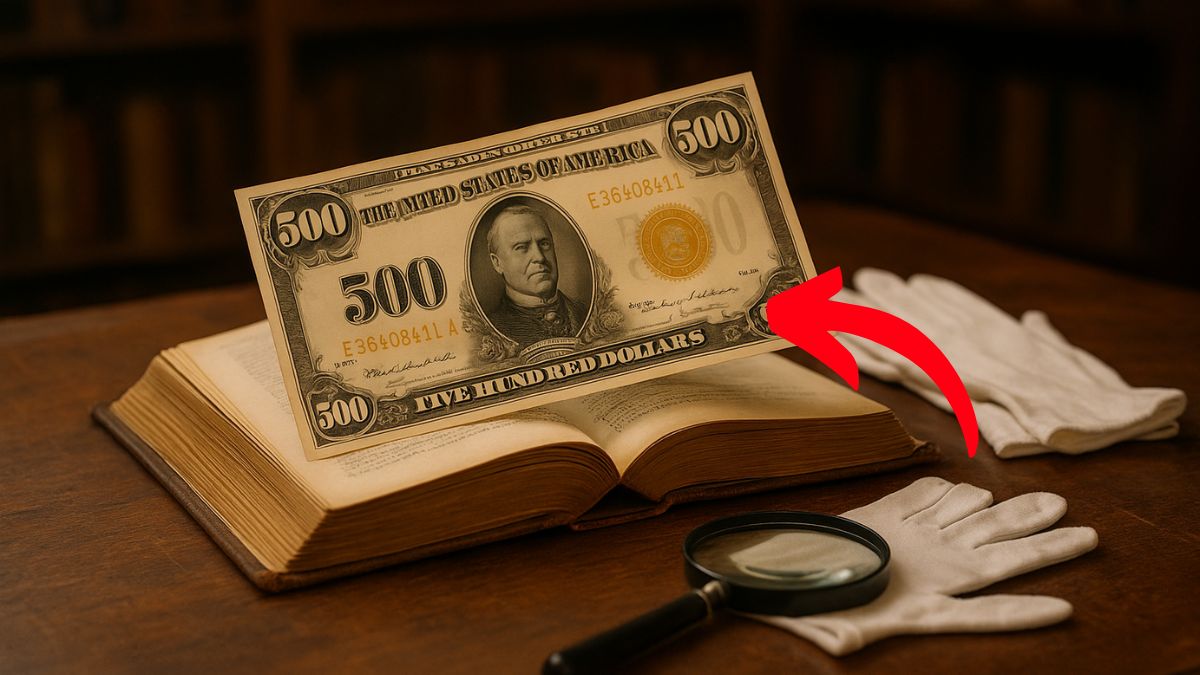In a remarkable turn of events, a seasoned coin collector stumbled upon a rare $500 gold certificate concealed within the pages of an old book.
This unexpected find has sent ripples through the numismatic community, as such certificates are exceedingly scarce and highly sought after by collectors.
The certificate, identified as a Series 1882 $500 Gold Certificate, features a portrait of Abraham Lincoln and bears the signatures of William S. Rosecrans and James W. Hyatt.
What makes this discovery even more extraordinary is that only one other specimen of this particular series is known to exist, which is housed in the Federal Reserve Bank Collection.
Historical Significance of Gold Certificates
Gold certificates were first issued in the United States in the 19th century as a form of paper currency backed by gold reserves. These certificates were used primarily for large transactions and were redeemable for gold coins at the Treasury.
The issuance of gold certificates ceased in 1933 during the Great Depression, following the government’s decision to take the country off the gold standard.
The Series 1882 $500 Gold Certificate is particularly notable for its rarity and historical value. The certificate’s design includes intricate engravings and security features that reflect the artistry and technological capabilities of the era.
Its scarcity is attributed to the limited number of high-denomination notes printed and the subsequent recall and destruction of such notes during the 1930s.
Valuation and Market Impact
The discovery of this rare certificate has significant implications for the numismatic market. In 2013, a similar Series 1882 $500 Gold Certificate was sold at auction for $1.41 million.
Given the certificate’s rarity and condition, experts anticipate that it could fetch a similar or even higher price at auction today.
The table below provides a summary of key details related to the certificate:
| Feature | Description |
|---|---|
| Denomination | $500 |
| Series | 1882 |
| Portrait | Abraham Lincoln |
| Signatures | William S. Rosecrans and James W. Hyatt |
| Known Specimens | 2 (including this discovery) |
| Last Auction Price | $1.41 million (2013) |
| Estimated Current Value | Over $1 million |
The Allure of Hidden Treasures
This discovery underscores the enduring allure of hidden treasures and the importance of meticulous examination of historical items.
Collectors and enthusiasts are reminded that valuable artifacts can often be found in the most unexpected places, such as old books, attics, or estate sales.
The numismatic community eagerly awaits the certificate’s authentication and potential appearance at a future auction, where it is expected to draw significant interest from collectors worldwide.
The serendipitous discovery of a Series 1882 $500 Gold Certificate hidden within a book serves as a poignant reminder of the treasures that may lie unnoticed in our midst. This find not only adds a remarkable piece to the annals of numismatic history but also reignites interest in the search for hidden artifacts.
As the certificate undergoes authentication and potential auctioning, it stands as a testament to the enduring value of historical currency and the thrill of discovery.
FAQs
What is a gold certificate?
A gold certificate is a form of paper currency that was issued by the U.S. government, representing a specific amount of gold held in reserve. These certificates were used primarily for large transactions and were redeemable for gold coins at the Treasury.
Why are high-denomination gold certificates rare?
High-denomination gold certificates are rare because they were printed in limited quantities and were primarily used for large financial transactions. Additionally, many were recalled and destroyed during the 1930s when the U.S. government discontinued the gold standard.
How can I determine the value of a gold certificate?
The value of a gold certificate depends on factors such as its series, denomination, rarity, condition, and historical significance. Consulting with a professional numismatist or reputable auction house can provide an accurate appraisal.

